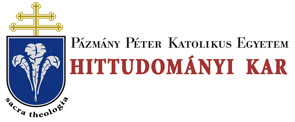Folia Canonica 10. (2007)
PROCEEDINGS OF THE INTERNATIONAL CONFERENCE - Szabolcs Anzelm Szuromi: Development of the Clerical Duties and Rights Based on the 11th-12th Centuries. Canonical Collections
208 SZABOLCS ANZELM SZUROMI Canones Apostolid and the Statuta Ecclesiae antiqua,5 But the newly inserted patristic material also did not contain clear definition as we can see in the Gregorian compilations and in their sources, especially the works of St. Jerome, St. Cyprian and St. Augustine.6 The most important theological (ecclesiological) canons in the canon law collections of the 11th century were quoted from writing of these indicated patristic authors. On the other hand, we can see clearly the close connection between the bishop and the college of priests. The function of the “archipresbyter” and his status in the ecclesiastical hierarchy also was described on the basis of ancient canonical material in that time.7 It can be found first in the 43rd prayer of St. Gregory of Nazianzus8, and in the 125th letter of St. Jerome too. Therefore, the bishop seems to be the head of the college of priests.9 Deacons were ordained to help the bishop and priests, not only the bishop. This idea took place in numerous canons which mention alternately the bishop and the priest concerning the function of deacon in the canonical collections. This interpretation can set in proper light the unity of the different degrees of Holy Orders. The 52nd letter of St. Jerome is a good example of this theological background.10 The bishop is not called ’Lord’ by the other clerics because there is only one Lord, one Church and one Service. The bishop has been elected particularly for the pastoral misson in the Church in a paternal spirit as a successor of the Apostles.11 This nice explanation took place in several Gregorian canonical collec5 Erdő, P., Die Quellen des Kirchenrechts. Eine geschichtliche Einführung (Adnotatio- nes in lus Canonicum 23), Frankfurt am Main 2002.19-20. GAUDEMET, J., Le sources du droit de l’Église en Occident du If au Vif siècle, Paris 1985. 24—25. Edition: Metzger, M., Les constitutions apostoliques III (Sources chrétiennes 336) Paris 1987. 274-309. 6 SZUROMI, Sz.A., Die patristische Wurzel der bischöflichen Kirchendisziplin in der "Collectio Anselmi Lucensis", in Rivista Internazionale di diritto comune 12 (2001) 249-263. 7 About the office of “archipresbyter” cf. Lynch, J.E., The Changing role of the Bishop: A Historical Survey, in The Jurist 39 (1979) 289-312, especially 306. 8PG 36, 493-606. 9Cf. LYNCH, J.E., Co-Responsibility in the First Five Centuries: Presbyteral Colleges and Election of Bishops, in The Jurist 31 (1971) 14—54. 10 Cf. SZUROMI, Sz.A., The clarification of the different degrees of Holy Orders up to the 5,h Century, in Proceedings of the International Congress of Canon Law, Admet (Liban) 2004 (under press). 11 Esto subiectus pontifici tuo et quasi animae parentem suspice; amare filiorum, timore seniorum est: et si pater sum, inquit, ubi est honor meus? et si dominus ego sum, ubi est timor meus? plura tibi in eodem uiro obsemanda sunt nomina: monachus, pontifex, anunculus. Sed et episcopi sacerdotes se sciant esse, non dominos: honorent clericos quasi clericos, ut et ipsis a clericis quasi episcopis deferatur. Scitum illud est oratoris Domitii: «ego te», inquit, «habeam ut principem, cum tu me non habeas ut senatorem»? Quod Aaron et filios eius, hoc episcopum et presbyteros nouerimus: unus Dominus, unum templum, unum sit etiam ministerium. Recordemur semper quid apostolus Petms praecipiat sacerdotibus: pascite eum, qui in uobis
